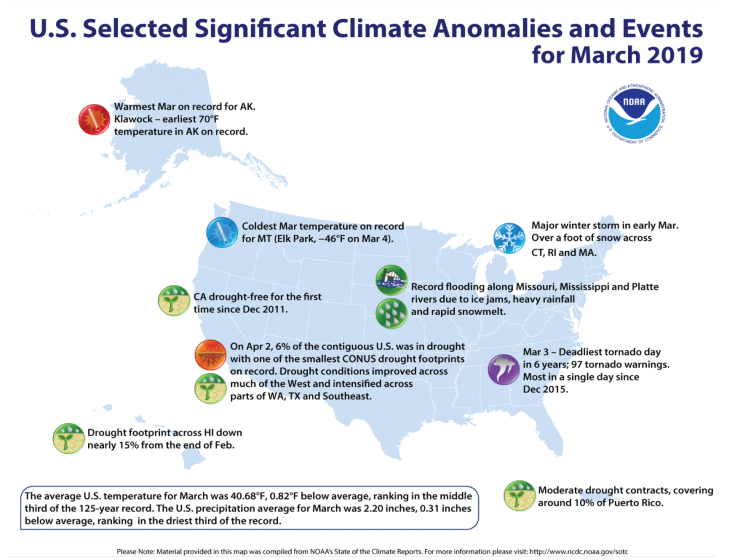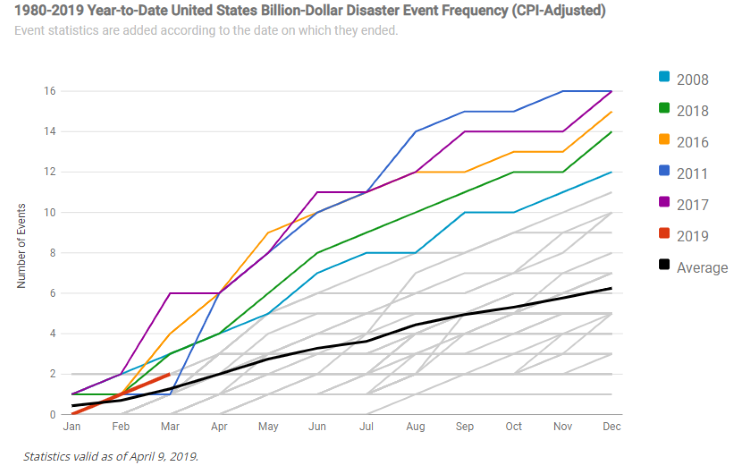Billion Dollar Weather in the US
In the first three months of 2019, there were two weather and climate disaster events with losses exceeding $1 billion each across the US. These events included a severe storm event across the Southeast, Ohio Valley and Northeast, and one flooding event in the central US, which is still ongoing. The first three months of 2019 saw the coldest start to a year since 2014, with March also being one of the driest months on record.

Flash flooding across the central US was a result of blizzards and heavy rain falling on compacted snow and frozen ground. A State of Emergency was declared in parts of Nebraska, Iowa, South Dakota and Wisconsin as the Missouri, Platte and Mississippi rivers breached their banks. In contrast, Florida and Alaska saw significantly above average temperatures for the first quarter of 2019.
In February 2019, widespread damage resulted from severe weather and flooding in the South and high winds across Ohio Valley and Northeastern states. Historic Midwest flooding, which began in March and is currently ongoing, inundated millions of acres of agriculture, numerous cities and towns and caused widespread damage to roads, bridges, levees and dams. The states most affected include Nebraska, Iowa, Missouri, South Dakota, Minnesota and Wisconsin.
In April 2019, the National Centers for Environmental Information (NCEI) added three historical weather and climate events. The US has now sustained 246 weather and climate disasters since 1980 where overall damages/costs reached or exceeded $1 billion. The total cost of these events exceeds $1.6 trillion.

The National Oceanic and Atmospheric Administration (NOAA) provides monthly climate summaries to the US government, business, academia and the public in order to support informed decision-making. Full details of its March summary can be found here.
Graphics: NOAA
Photo: Patrick Poendl|123rf